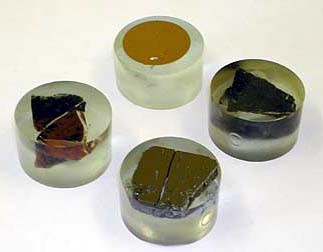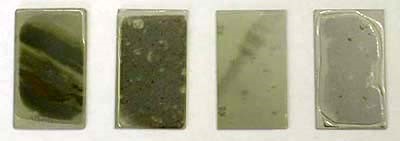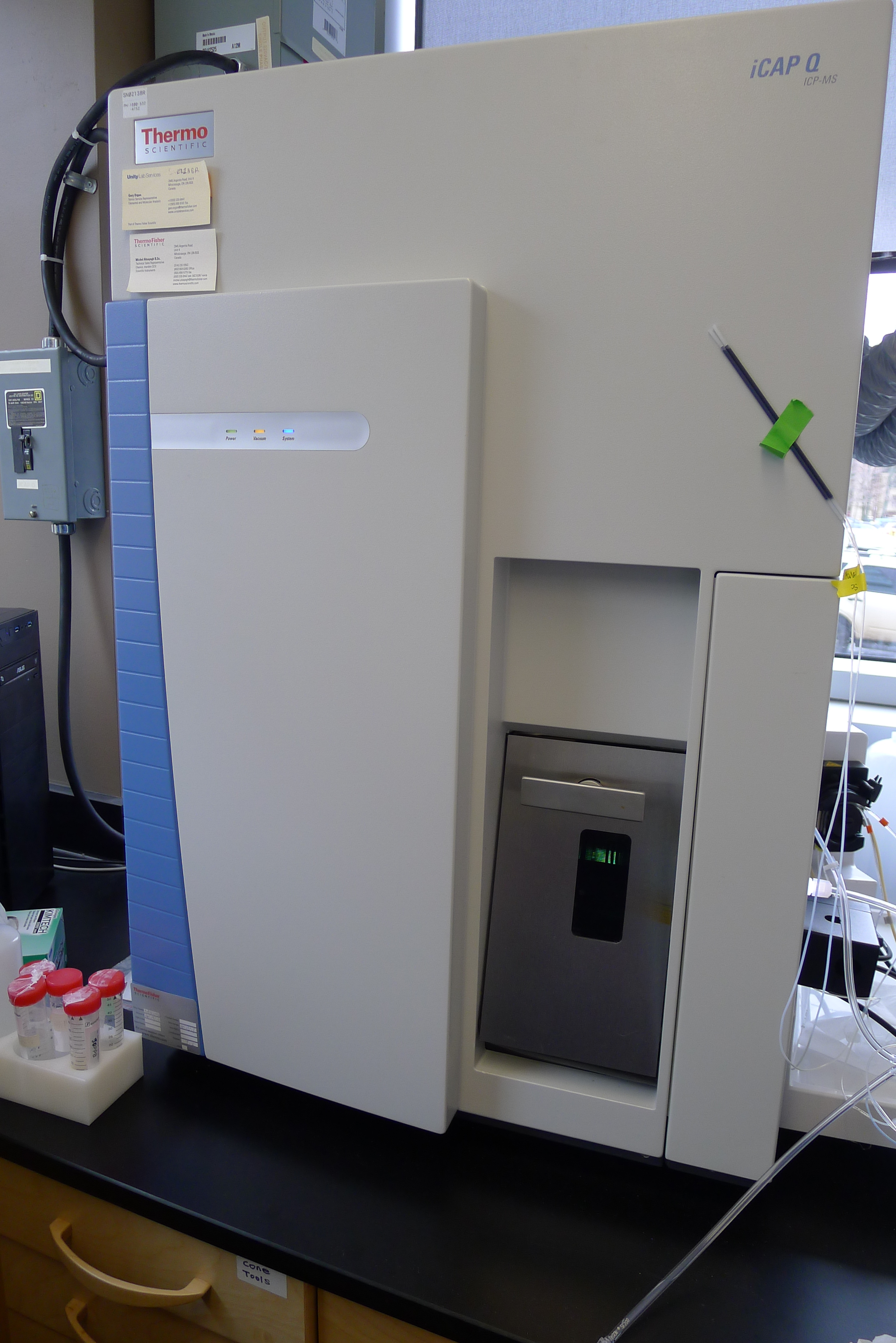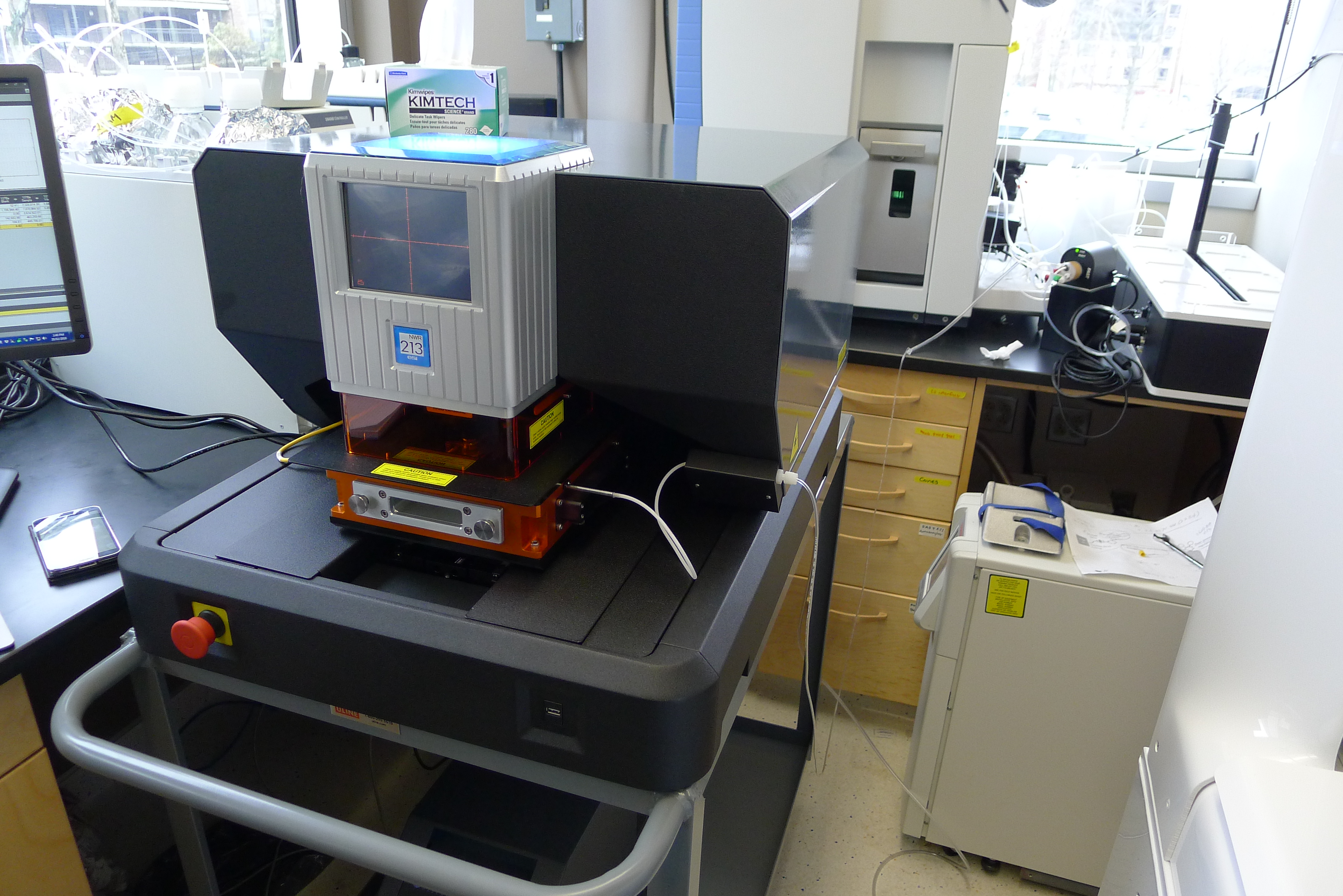Facilities
The Thermo Scientific iCAP Q ICP-MS (pictured here) is a quadrupole mass spectrometer mass spectrometer offering high analytical sensitivity and ease of operation using the QTEGRA software interface. The instrument is equipped with a single helium Kinetic Energy Discrimination (He KED) cell, which effectively removes molecular interferences that affect instrument background, allowing for a reduction in limits of detection for many elements.
The laser ablation microprobe (shown below) comprises an ESI model NWR213 instrument employing a frequency quintupled Nd:YAG laser operating at 213 nm. The laser ablates material from the sample surface, with the resulting aerosol transported from the cell to the ICP torch through an inert plastic tube, using helium as the carrier gas. Samples can also be introduced as a solution, with analyses using an autosampler (to the right of the ICP-MS) for automated analyses.
Samples can be visualized in either reflected or transmitted light, with full chamber illumination using a coaxial LED array. Navigation on the sample and control of the laser ablation system are achieved using a user-friendly software interface (pictured below). Acquisition can be done manually with separate control of the laser and mass spectrometer, or by automated acquisition on an array of preselected points.
The view below is of ablation pits (~100 microns in diameter) produced on the cut surface of a wafer of NIST 610 glass.
The cell design is extremely flexible in terms of the numbers and shape of samples that can be accommodated. Although samples with an irregular shape can be loaded into the holder for measurement, most commonly samples are mounted in 1” epoxy molds, or sectioned and attached to a glass slide, then ground and subject to a final polish with 1 micron alumina or diamond grit.

Examples of samples embedded in 1” round epoxy cylinders, with the upper surface polished.

Example of polished petrographic thin sections in which the upper surface is polished. Each section is 25 mm x 51 mm (1” x 2”).



